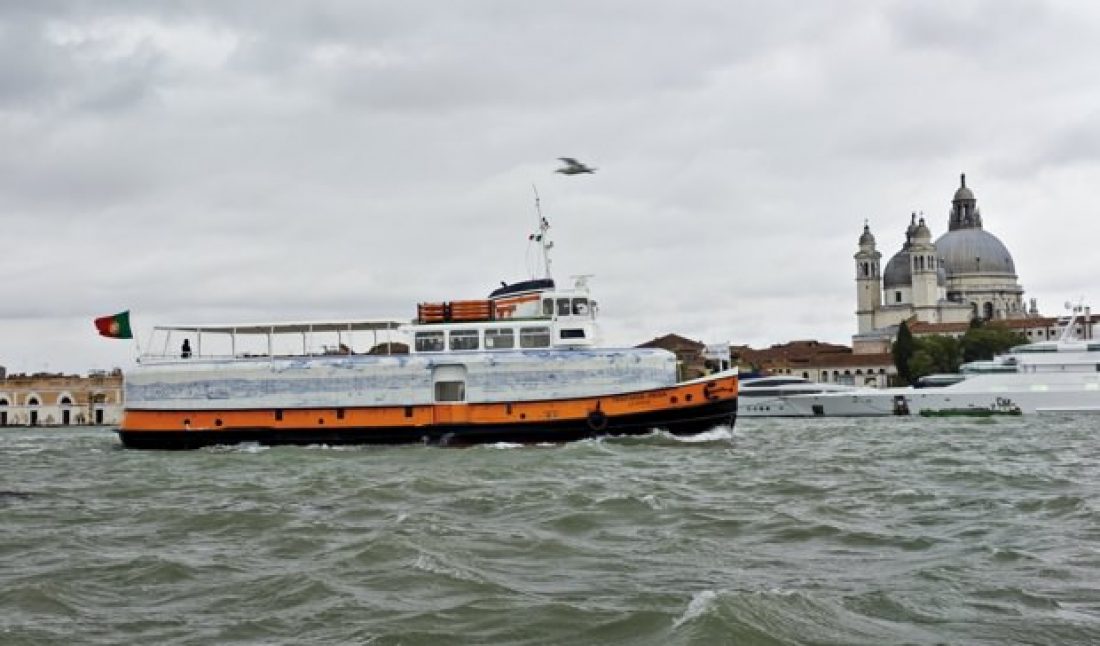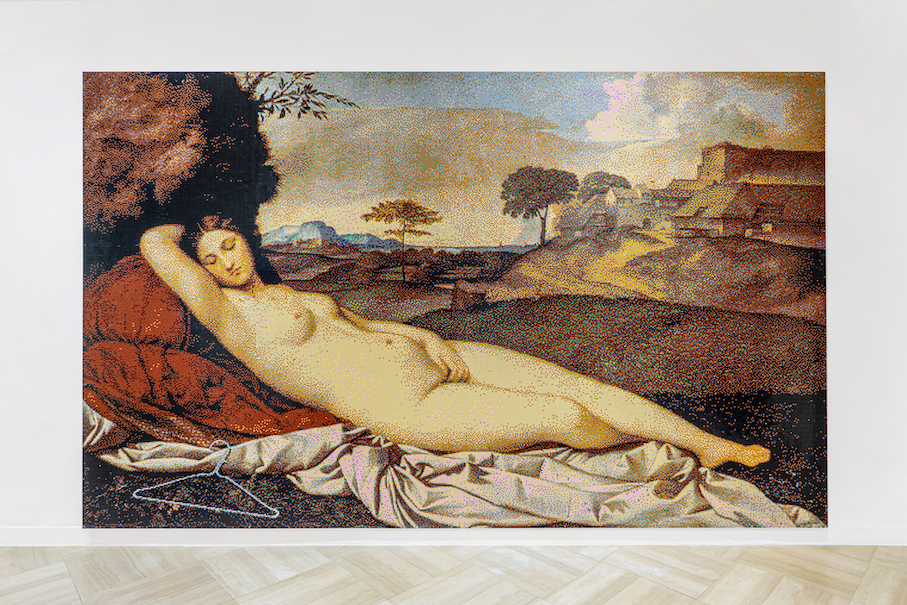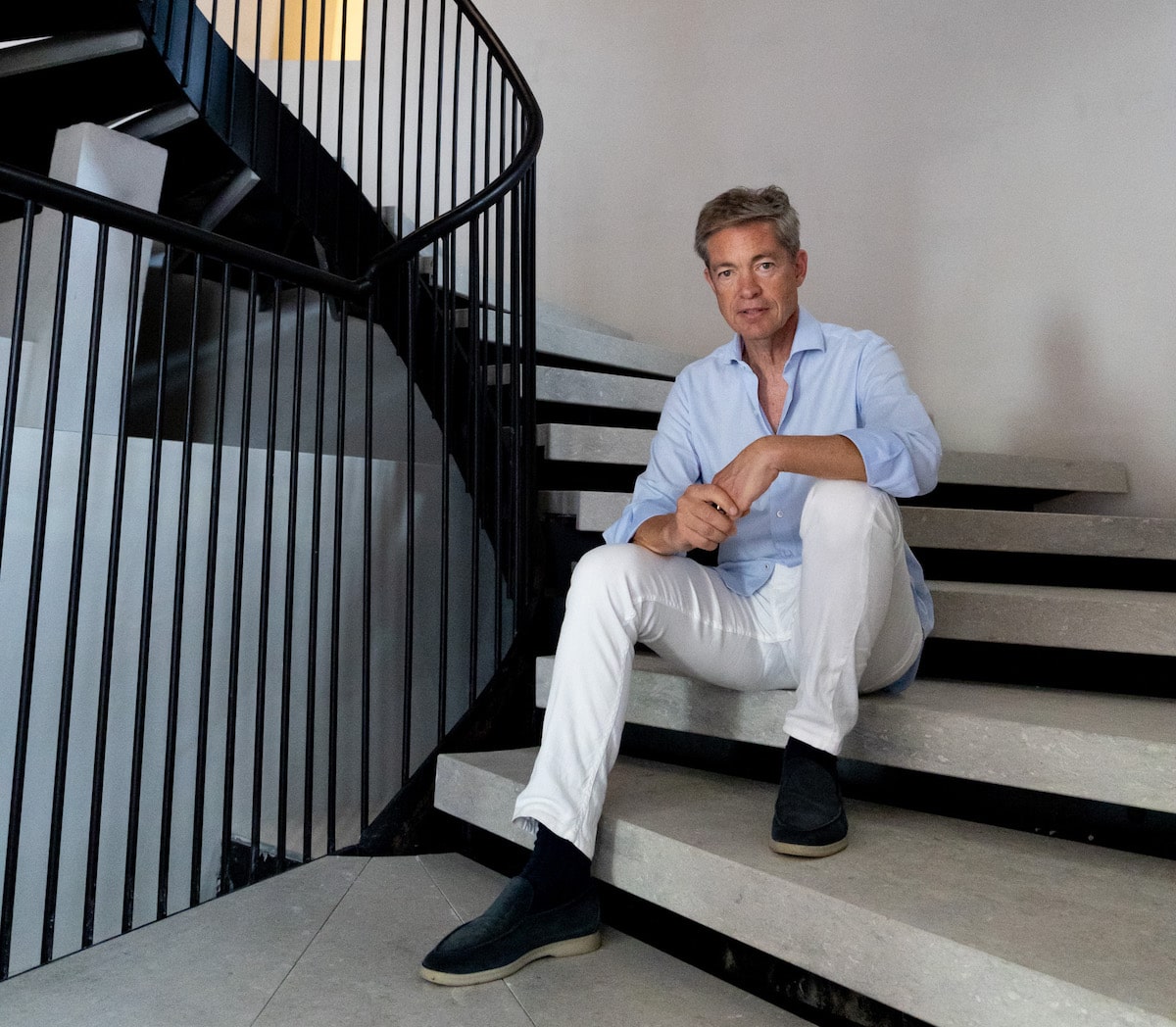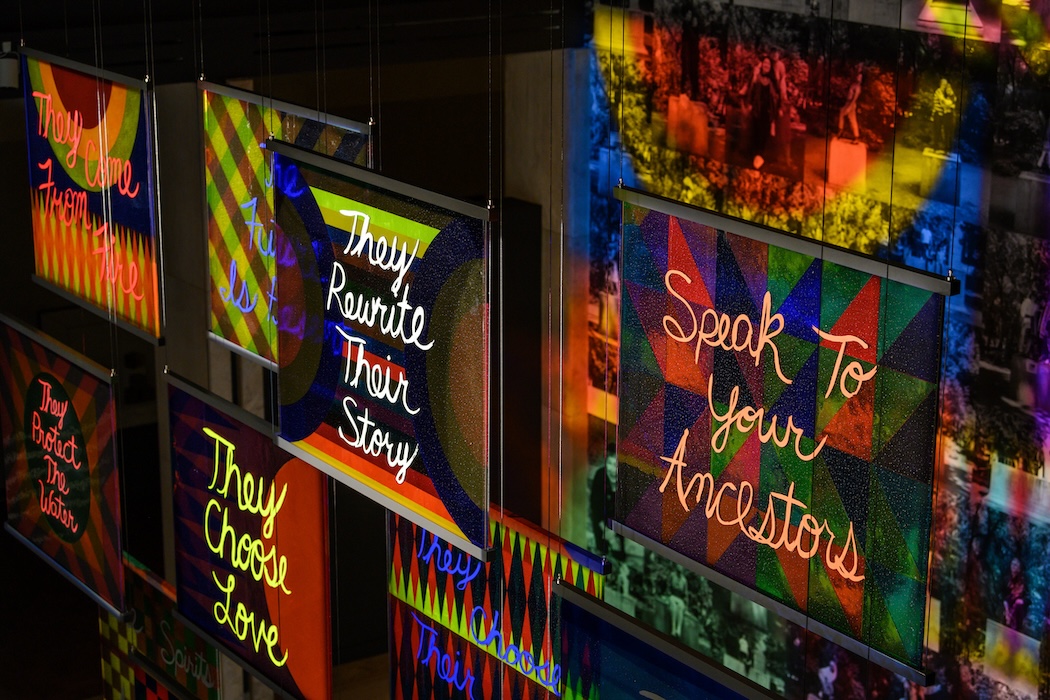An excerpt from Whitewall’s summer 2013 Design Issue out later this month.
The French-born Portuguese artist Joana Vasconcelos is perhaps best known for The Bride (2001), an 18th-century-style candelabra made entirely of tampons. She’s a master of decontextualizing monumental historical spaces in a manner that’s neither submissive nor irreverent. Her narratives concern national identity, the intersection of the public and private, and the status of women. In 2012, following Jeff Koons, Xavier Veilhan, Bernar Venet, and Takashi Murakami, Vasconcelos became the youngest and only female artist to exhibit at the Palace of Versailles, where she decorated a Bell-27 helicopter with glass studs and ostrich feathers, assembled 4,000 illuminated champagne bottles in the Parterre d’Eau, and summoned Mary Poppins, in the form of a strange and vast chandelier creature made of exuberant textiles and hand-sewn objects, to descend upon the Gabriel Staircase.
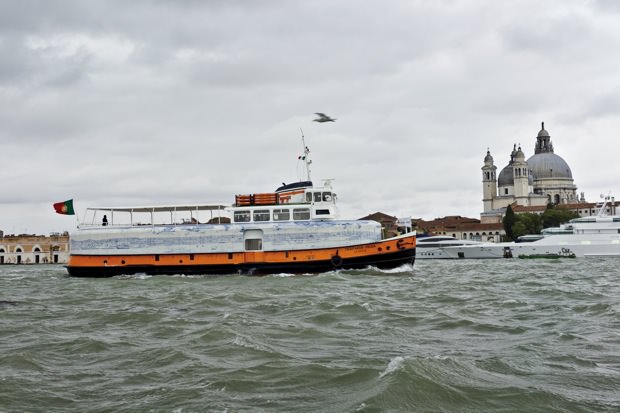 The Trafaria Praia ferryboat/work in Venice.
The Trafaria Praia ferryboat/work in Venice.
Beginning last week, Vasconcelos represented Portugal at the Venice Biennale, where she created a cacilheiro that ferries visitors from the Arsenale to Giardini and Punta della Dogana. A contemporary interpretation of The Great Panorama of Lisbon, the 18th-century masterpiece by Gabriel del Barco of a view of Lisbon before the 1755 earthquake, covers the outside surface, complemented by crawling, illuminated crochet tentacles installed inside the cabin. In conversation with the history and enchanted energy of the Grand Canal, the mobile pavilion traces Lisbon’s legend as the great Renaissance port city and naval superpower. Whitewall caught up with Vasconcelos in January 2013 at Haunch of Venison, New York, before the opening of the group exhibition “How to Tell the Future from the Past.”
WHITEWALL: How did the venue of Versailles influence the conception of your installation?
JOANA VASCONCELOS: A lot. Instead of installing pieces into the Palace, I tried to impose my work into the ambience of Versailles. The works were site-specific, they work along history and pay close attention to the materials of Versailles: wood, metal, textiles, fabrics, walls. I went to the company that has been producing textiles for Versailles since it was built and still does so today with the same techniques they used before. They sponsored me and gave me the same Versailles fabrics. The same went for the furniture I used — same technique, same materials.
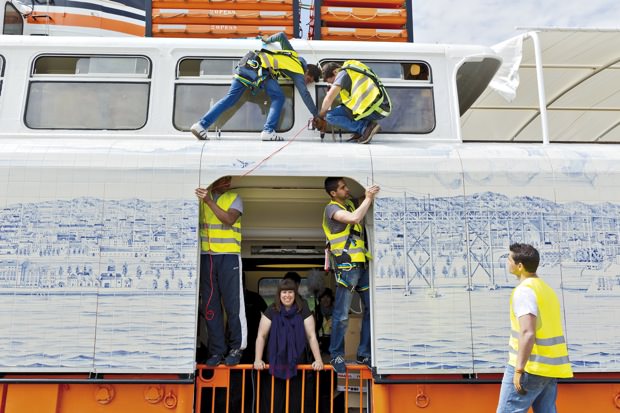 The Great Panorama of Lisbon (21st Century) installation in progress at Marghera Port in Venice.
The Great Panorama of Lisbon (21st Century) installation in progress at Marghera Port in Venice.
WW: Repetition of smaller elements is common in your works.
JV: Yes. We live in a consumerist era where we consume repeatedly, and repetition has become a part of our daily lives. I think that through repetition we achieve abstraction.
WW: Why a boat for the Venice Biennale?
JV: Portugal is known for its great sailors that distinguished us in the 14th and 15th centuries. They sailed to China, Japan, Africa, and Brazil. We were the first to go to Japan and the first to reach China by sea. It’s a great part of our history, and I want to bring tradition and a symbol for our nation to the Biennale. It’ll be an installation of today, but it’s connected to our history, the country that represents me. It also connects Lisbon to Venice; both are cities of very specific, special people.
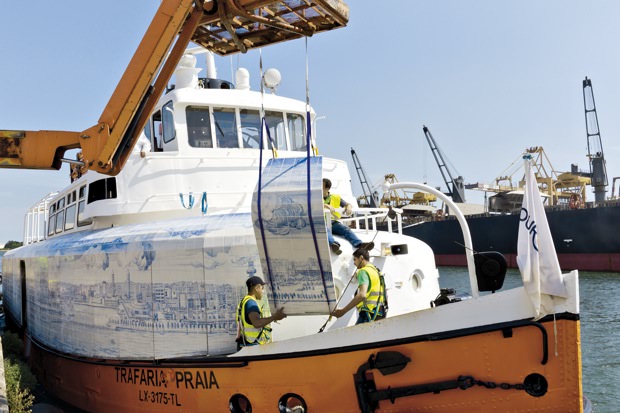 The Great Panorama of Lisbon (21st Century) installation in progress at Marghera Port in Venice.
The Great Panorama of Lisbon (21st Century) installation in progress at Marghera Port in Venice.
WW: Could you tell us more about the tiles?
JV: They are blue and white tiles that make up a drawing of the city today. There’s an old factory that still produces them the same way it did before, hand-painted, very traditional. They are like the ones on Tetris 17th Century. I like their texture and tactile quality.
WW: What’s your concept behind this Tetris 17th Century piece?
JV: I liked the architectural aspects, and the idea that there are things hidden behind the walls in your home. The walls are alive, and there are also women hidden at home attending to domestic tasks, hiding like secrets. They reveal themselves here.
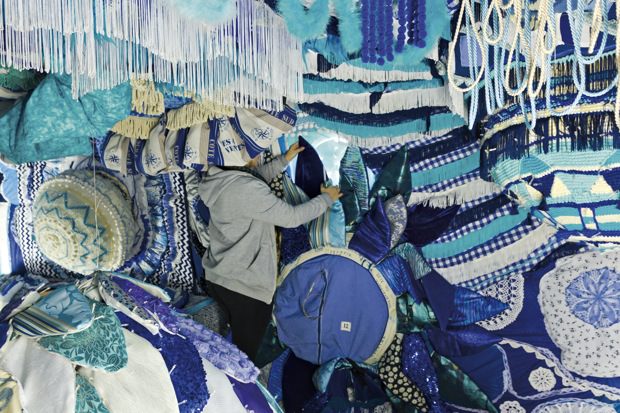 The Valkyrie Azulejo installation in progress within the Trafaria Praia ferryboat at Navaltagus shipyard in Seixal, Portugal.
The Valkyrie Azulejo installation in progress within the Trafaria Praia ferryboat at Navaltagus shipyard in Seixal, Portugal.
WW: This is not your first time at the Biennale. How will your approach differ?
JV: It’s always different. Each project has different — you have to think about how to integrate your work into the situation, how could your work adapt to the environment. It’s also important to think politically and critically about the space itself. There are always specific rules and dimensions to follow. Each project is special in philosophical and physical ways.
WW: Do you prefer to create art that’s public and large-format?
JV: The wide audience is the main focus of public art. The work does not need to be big — how you interact with the audience is more important. Indoors works are constrained by architectural elements of their environment, not influenced by the weather, seasons.
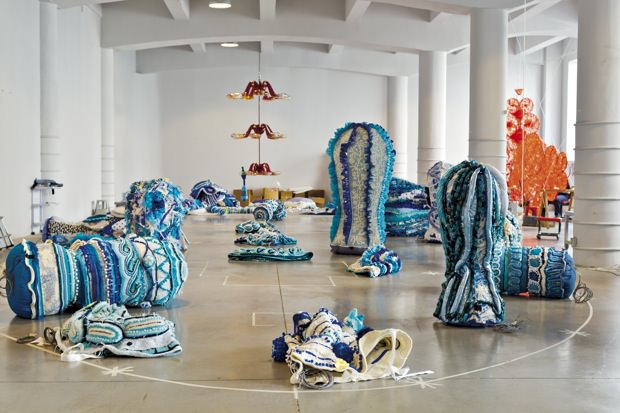 The Valkyrie Azulejo installation in progress at the artist’s studio in Lisbon.
The Valkyrie Azulejo installation in progress at the artist’s studio in Lisbon.
To read the rest of our interview with Joana Vasconcelos be sure to pick up Whitewall‘s summer 2013 issue out later this month.







